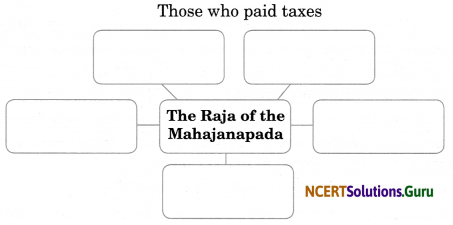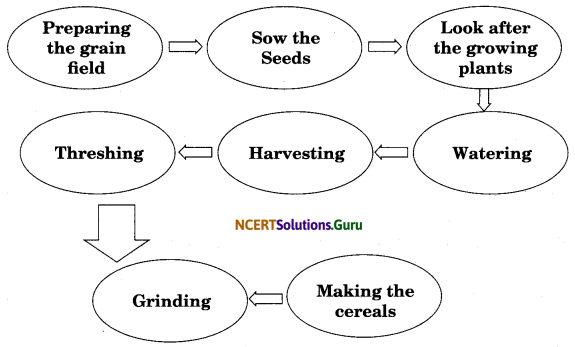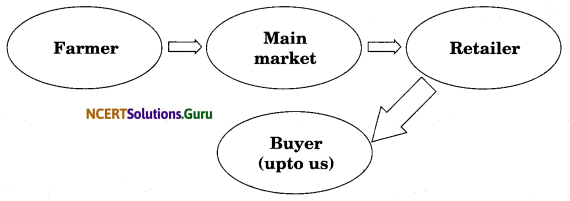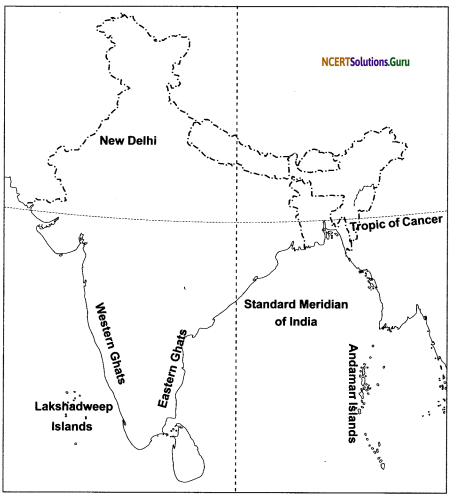What, Where, How and When? Class 6 Questions and Answers Provided helps you to answer complex Questions too easily. You can use them while preparing for board exams and all of them are given by subject experts. Reading NCERT Solutions for Class 6 Social Science History Chapter 7 New Questions and Ideas familiarizes you with the kind of questions appearing in the board exams. Students are advised to read these solutions on a regular basis to score well.
New Questions and Ideas Class 6 Questions and Answers History Chapter 7
Make your learning experience enjoyable by preparing from the quick links available on this page. Use the Class 6 SST History Chapter 7 NCERT Solutions and get to know different concepts involved. All the Solutions are covered as per the latest syllabus guidelines. Knowing the NCERT Class 6 History Chapter 7 Questions and Answers helps students to attempt the exam with confidence.
Class 6 History Chapter 7 NCERT Textbook Questions and Answers
Let’s Recall
Question 1.
Describe the ways in which the Buddha tried to spread his message to the people.
Answer:
The Buddha tried to spread his message to the people by following ways:
- He used Prakrit language which was well popular language in the public, so that the people could understand properly what he said.
- He spent his life travelling on foot, going from place to place and thus he contacted many people and could spread his message to the masses.
- First he himself followed his rules strictly and thus he became an ideal for the people.
Question 2.
Write whether true or false.
(a) The Buddha encouraged animal sacrifices.
(b) Samath is important because it was the place where the Buddha taught for the first time
(c) The Buddha taught that Karma has no effect on our lives.
(d) The Buddha attained enlightenment at Bodh Gaya.
(e) Upanishadic thinkers believed that the atman and brahman were ultimately one.
Answer:
(a) False
(b) True
(c) False
(d) True
(e) True.
Question 3.
What was the questions that Upanishadic thinkers wanted to answer?
Answer:
The questions that Upanishadic thinkers wanted to answer are:
- They wanted to know about life after death,
- Why sacrifice should be performed, whether something is permanent even after death.
- They wanted to know about atman or the individual soul.
- They wanted to know whether atman and the brahman are one.
Question 4.
What were the main teaching of the Mahavira?
Answer:
Main teachings of the Mahavira are:
- Men and women who wished to know the truth must leave their home.
- They must follow rules of ahimsa very strictly, which means not hurting or killing living beings.
- Everyone should lead very simple lives and get food by begging.
- They had to be absolutely honest and never steal.
- People should observe celibacy.
- Men had to give up everything, including their clothes etc.
Let’s Discuss
Question 5.
Why do you think Anagha’s mother wanted her to know the story of the Buddha?
Answer:
Anagha’s mother wanted her to know the story of the Buddha because Mahatma Buddha was a very wise and inspiring man. He was a kind person and his teachings are still very useful in modern time. Along with other teachings, he also taught the lesson of ahimsha to the world. I think that Anagha’s mother wanted that she learn more and more about the Buddha so that she could understand his thoughts.
Question 6.
Do you think it would have been easy for slaves to join the sangha? Give reasons for your answer.
Answer:
Gautam Buddha allowed the slaves to join the sangha. However, it was necessary to take the permission of their owners and it would have not been so easy that an owner would permit him to join the sangha. That time slaves were considered the property of their owners. They could not do any work without permission of their owners.
Let’s Do
Question 7.
Make a list of at least five ideas and questions mentioned in this lesson. Choose three from the list and discuss why you think they are important even today.
Answer:
In the lesson, we have learnt ideas under three heads, that are:
(i) Ideas of Gautam Buddha
- Life is full of suffering and unhappiness.
- The causes of suffering are our cravings and desires, which often cannot be fulfilled.
- Sometimes, even if we get what we want, we are not satisfied and want even more or other things. The Buddha described this as thirst or tanha.
- He taught that this constant craving could be removed by following moderation in everything.
- He taught people to be kind and to respect the lives of others including animals.
- The results of our actions (called karma), whether good or bad, affect us both in this life and the next.
(ii) Ideas of Mahavira Swami
- Men and women who wish to know the truth must leave their homes.
- They must follow rules of ahimsa very strictly, which means not hurting or killing living beings.
- Followers lead very simple lives, begging for food.
- They had to be absolutely honest and never steal.
- They observed celibacy and men had to give up everything, including their clothes.
(iii) Ideas of Upanishads
- Upanishads refer us about life after death,
- Why sacrifices should be performed, whether something is permanent event after death.
- They described about was the atman or the individual soul and the brahman or the universal soul. They believed that both the atman and the brahman were one.
If we consider carefully on the points highlighted above, we will find that these are very important even today. What is the cause of suffering and unhappiness? No doubt, our cravings and desires which are never fulfilled. Why should people be kind and should respect the lives of others including animals? This is the question which refer us, if we all will be kind and respectful to the other, we can make a good society.
Should we be absolutely honest and never steal? The importance of this question can be understood that in the present time on the appointment of all constitutional positions, oath of honesty is compulsory. No doubt, we cannot get success without integrity.
Question 8.
Find out more about men and women who renounce the world today. Where do they live, what kinds of clothes do they wear, what do they eat? Why do they renounce the world?
Answer:
Today, many people are renouncing the world which include religious persons, politicians, saints, social reformers etc. In this group, the religious persons such as Dalai Lama, Sankracharyas, many Jain Munies are included. Students discuss with teacher and write the complete answer.
Hope the data shared above regarding the NCERT Class 6 Social Science History Chapter 7 New Questions and Ideas PDF has aided in your exam preparation. If you ever need any assistance you can always reach us and our team will guide you at the soonest possibility.



